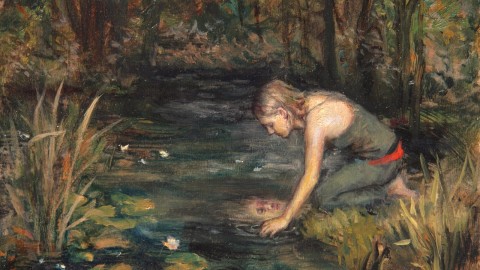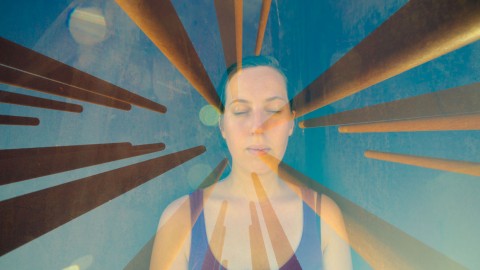Headache is defined as a pain arising from the head or upper neck of the body.
The pain originates from the tissues and structures that surround the skull or thebrain because the brain itself has no nerves that give rise to the sensation of pain (pain fibers). The thin layer of tissue (periosteum) that surrounds bones, muscles that encase the skull, sinuses, eyes, and ears, as well as thin tissues that cover the surface of the brain and spinal cord (meninges), arteries, veins, and nerves, all can become inflamed or irritated and cause headache. The pain may be a dull ache, sharp, throbbing, constant, intermittent, mild, or intense.
There are three major categories of headache based upon the source of the pain.
- Primary headaches
- Secondary headaches
- Cranial neuralgias, facial pain, and other headaches
Primary headaches include migraine, tension, and cluster headaches, as well as a variety of other less common types of headaches.
Tension headaches are the most common type of primary headache.
Tension headaches occur more commonly among women than men.
According to the World Health Organization, 1 in 20 people in the developed world suffer with a daily tension headache.
Migraine headaches are the second most common type of primary headache. Migraine headaches affect children as well as adults. Before puberty, boys and girls are affected equally by migraine headaches, but after puberty, more women than men are affected.
Cluster headaches are a rare type of primary headache. It more commonly affects men in their late 20s, though women and children can also suffer from this type of headache.
Primary headaches can affect the quality of life. Some people have occasional headaches that resolve quickly while others are debilitating. While these headaches are not life threatening, they may be associated with symptoms that can mimic strokes.
Secondary headaches are those that are due to an underlying structural or infectious problem in the head or neck. This is a very broad group of medical conditions ranging from dental pain from infected teeth or pain from an infected sinus, to life-threatening conditions like bleeding in the brain or infections like encephalitis or meningitis.
Traumatic headaches fall into this category including post-concussion headaches.
This group of headaches also includes those headaches associated with substance abuse and excess use of medications used to treat headaches (medication overuse headaches). “Hangover” headaches fall into this category as well. People who drink too much alcohol may waken with a well-established headache due to the effects of alcohol and dehydration.
- Medication overuse headache (rebound headache)
- Encephalitis
- Concussions
- Dehydration
- During sexual intercourse
- Hypnic headache
- Infections
Cranial headache
Neuralgia means nerve pain (neur=nerve + algia=pain). Cranial neuralgia describes inflammation of one of the 12 cranial nerves coming from the brain that control the muscles and carry sensory signals (such as pain) to and from the head and neck. Perhaps the most commonly recognized example is trigeminal neuralgia, which affects cranial nerve V (the trigeminal nerve), the sensory nerve that supplies the face and can cause intense facial pain when irritated or inflamed.
The different types of headaches depend upon the class to which they belong.
Some common types include:
- Primary tension headaches that are episodic
- Primary tension headaches that are chromic
- Primary muscle contraction headaches
- Primary migraine headaches with aura
- Primary migraine headaches without aura
- Primary cluster headache
- Primary paroxysmal hemicrania (a type of cluster headache)
- Primary cough headache
- Primary stabbing headache
- Primary headache associated with sexual intercourse
- Primary thunderclap headache
- Hypnic headache (headaches that awaken a person from sleep)
- Hemicrania continua (headaches that are persistently on one side
- only, right or left [unilateral])
- New daily-persistent headache (NDPH) (a type of chronic
- headache)
- Headache from exertion
- Trigeminal neuralgia and other cranial nerve inflammation
Secondary headaches due to:
- Trauma
- Disorders
- Infection
- Structural problems with the bones of the face, teeth, eyes, ears, nose,
- sinuses or other structures
Migraine headache is caused by inflammation or irritation of structures that surround the brain or affect its function. While the brain itself has no pain nerve fibers, everything else above the shoulders, from the neck, skull, and face, can cause a person to have head pain. Systemic illnesses, including infection or dehydration, can have associated headache. These are known as toxic headache. Changes in circulation and blood flow or trauma can also cause headache.
Changes in brain chemistry may also be associated with headache: Medication reactions, drug abuse and drug withdrawal can all cause pain.
TENSION HEADACHE
While tension headaches are the most frequently occurring type of headache, their cause is not known. The most likely cause is contraction of the muscles that cover the skull. When the muscles covering the skull are stressed, they may become inflamed, go into spasm, and cause pain. Common sites include the base of the skull where the trapezius muscles of the neck insert, the temples where muscles that move the jaw are located, and the forehead.
There is little research to confirm the exact cause of tension headaches. Some believe that tension headaches occur because of physical stress on the muscles of the head. For example, these stressors can cause the muscles surrounding the skull to clench the teeth and go into spasm. Physical stressors include difficult and prolonged manual labor, or sitting at a desk or computer concentrating for long periods. Emotional stress also might cause tension headaches by causing the muscles surrounding the skull to contract.
Common signs and symptoms of tension headaches include:
- Pain that begins in the back of the head and upper neck and is often described as a band-like tightness or pressure. It may spread to encircle the head.
- The most intense pressure may be felt at the temples or over the eyebrows where the temporalis and frontalis muscles are located.
- The pain may vary in intensity but usually is not disabling, meaning that the sufferer may continue with daily activities. The pain usually is bilateral (affecting both sides of the head).
- The pain is not associated with an aura, nausea, vomiting, or sensitivity to light and sound.
- The pain occurs sporadically (infrequently and without a pattern) but can occur frequently and even daily in some people.
- The pain allows most people to function normally, despite the headache.
HOMEOPATHIC REMEDIES
- Belladonna: intense headache with violent, throbbing pains; extremely sensitivity to light, noise, touch, strong or unusual smell or jarring; pains begin and end suddenly; pain may be localized anywhere in the head or spread throughout the head, but is most often focused in the forehead; pain may extend from the forehead to the back of the head; face is flushed and hot, and hands and feet may be cold; pupils may be dilated; often used for headaches associated with high fever.
- Bryonia: pain is described as a steady ache, marked sensitivity to motion (even slight motion of the head or eyes); pain often in forehead and extending to the back of the head, or centered over the left eye; pain is worse with light touch but better from firm pressure; the head feels full or heavy; worse in the morning; nausea, vomiting, and constipation may accompany the headache; emotionally irritable and wants to be left alone.
- Gelsemium: pain begins at the back of the head and extends to the rest of the head or forehead; may feel like a band or hood is bound tightly around the head; headache preceded by dim vision or other visual disturbances; pain may be localized on the right side of the head; pain aggravated by light, noise, motion, and jarrig, but not affected much by temperature change; better from napping or urinating; person feels dull, tired, heavy, and apathetic; eyelids droop and looks exhausted; not very irritable, but wants to be left alone.
- Iris: pain felt on one side of the forehead, especially on the right side; pain preceded or accompanied by dim vision or other eyesight changes; nausea and vomiting, with headache worse after vomiting; pain better by walking in the open air; periodically recurring migraines (e.g. every weekend).
- Nux vomica: headaches brought on by overeating, use of alcohol, coffee and other drugs, or missed sleep; overall sick feeling and digestive upset; sour or bitter taste in the mouth, queasiness, nausea and/or vomiting, dry heaving and/or gas; also for headache from mental overexertion, cold air or cold wind; worse from morning, especially on first waking; worse with motion, but shaking the head is especially painful; sound of footsteps is especially irritating; pain better from wrapping the head up a warm room, or from a nap if allowed to finish it; very irritable.
- Sanguinaria: especially noted for pain beginning in the back of the head and extending to and settling over the right eye or in the right side of the head; pain is sharp, spitting, knife-like and sometimes throbbing; nausea and vomiting at height of the pain; pain better after vomiting; worse with motion, better with sleep and firm pressure; headaches may recur in a consistent pattern.
- Spigelia: stitching, burning, and pulsating pain, usually in the front and often on the left side of the head; better from lying with the head propped up; worse from stooping, motion, noise, and cold, stormy weather; washing with cold water may feel good, but pain usually worsens after; head pain is made worse from warmth and temporarily better from cold; headache with stiff neck and shoulders which make motion very painful; may have severe pain in and around the eyes, extending deep into the sockets.








Very good note 🙏 about headache
Well explained